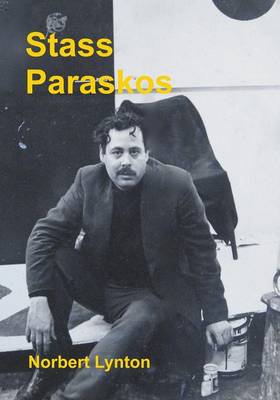Norbert Lynton presents a critical appraisal of the painter Stass Paraskos. This includes discussion of both Paraskos's life and artworks from the late 1950s to the present day.
Paraskos was born in Cyprus in 1933, but moved to England in 1953 to work as a cook in his brother's restaurant in Leeds. The restaurant was a popular meeting place for students from Leeds College of Art, who encouraged Stass to enrol on art classes at the College. At the time Leeds College of Art was described as the 'Bauhaus of England', with inspirational tutors such as Harry Thubron, Tom Hudson and Tom Watt.
After finishing College, in the early 1960s, Paraskos moved to St. Ives, Cornwall, where he befriended artists such as Terry Frost and Wilhelmina Barnes-Graham, and collectors such as Ronnie Duncan, before returning to Leeds in the mid-1960s where he became a tutor at College of Art. In 1966 he was arrested following an exhibition in Leeds at which it was claimed he had displayed 'obscene' paintings in contravention of the Vagrancy Act of 1838. The case was an international cause celebre, and brought major figures in the art world, including Herbert Read, to Leeds to speak for the defence and against censorship. Yet, despite even the Home Secretary Roy Jenkins offering his support, the case was lost. Nonetheless, the case was an important stage towards freedom for the arts in Britain, between the Lady Chatterley trial in 1960, and the Oz trial in 1971.
From 1970 Paraskos worked as a senior lecturer at Canterbury College of Art (later called Kent Institute of Art and Design or KIAD). In 1969, however, he had founded a small summer school back in Cyprus, to allow art students from Britain to spend a month each summer making art in Cyprus. This later grew under Paraskos's direction to become the Cyprus College of Art, providing year-round art courses.
Throughout this time, as Norbert Lynton shows, Paraskos was developing his artistic language, using bright colours and a simplified figurative style to paint images that evoke tales of village in his homeland of Cyprus. Often the scenes seem to step straight from the pages of Kazantakis, but the historic culture of Cyprus is also important, whether that is the mythology of the ancient Greeks, or Byzantine church culture.
Paraskos’s paintings are in numerous private and public collections, including those of the Arts Council of England, the University of Leeds, Leeds City Art Gallery, Laiki Bank Cultural Foundation, the Church of Cyprus, and the government collections in both Greece and Cyprus, to name but a few.
The book is lavishly illustrated with colour plates which give a sense of the devlopment of Paraskos's art and its relation to his life.
- ISBN10 0954452305
- ISBN13 9780954452308
- Publish Date 1 July 2003
- Publish Status Active
- Publish Country GB
- Imprint Orage Press
- Edition Reprint ed.
- Format Paperback (US Trade)
- Pages 98
- Language English
